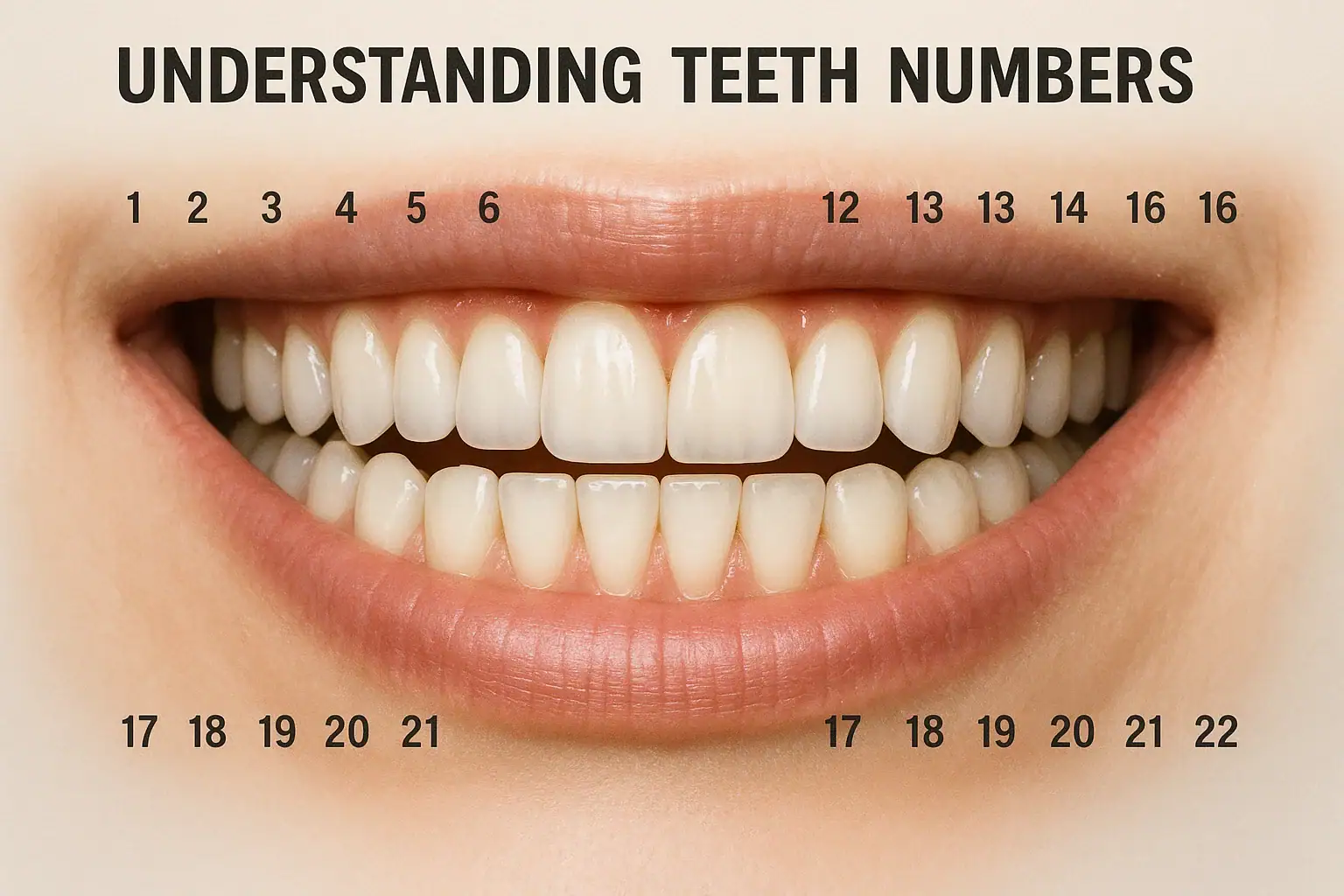Menu
Free Consultation

Whether you're reviewing your dental chart, trying to understand a treatment plan, or simply curious about how dentists refer to specific teeth, understanding teeth numbers is essential. Dental professionals around the world use different teeth numbering systems to identify and record the condition and treatment of each tooth precisely. This comprehensive guide breaks down everything you need to know about dental teeth numbers, including charts, systems, and how to find your wisdom teeth numbers.
Dental numbering is a universal method to identify each tooth in the mouth. With up to 32 permanent teeth (28 if wisdom teeth are missing), it's crucial for dentists to communicate clearly using consistent references.
Whether you're undergoing a root canal on tooth #14 or a wisdom tooth extraction on tooth #1, accurate teeth numbering ensures precision in diagnosis and treatment.
Dentists, oral surgeons, and hygienists use dental teeth numbers to:
This system minimizes confusion and streamlines patient care.
There are three primary systems used to number teeth:
A teeth numbers chart helps visualize the different systems:
Universal System (Permanent Teeth)
1 2 3 4 5 6 7 8 | 9 10 11 12 13 14 15 16
-------------------------|-------------------------
32 31 30 29 28 27 26 25 | 24 23 22 21 20 19 18 17
FDI System (Permanent Teeth)
18 17 16 15 14 13 12 11 | 21 22 23 24 25 26 27 28
------------------------|-------------------------
48 47 46 45 44 43 42 41 | 31 32 33 34 35 36 37 38
These charts are essential tools for understanding and communicating dental information.
Children have 20 primary teeth. Their numbering differs from adult teeth:
Universal System (Primary Teeth):
FDI System:
These teeth typically begin to erupt around 6 months and are lost between ages 6–12.
Adults typically have 32 permanent teeth:
They are numbered according to the selected system and are critical for chewing, speaking, and aesthetics.
Wisdom teeth are the third molars and often erupt between ages 17–25.
In the Universal System:
In the FDI System:
These teeth are often removed due to impaction or lack of space. Understanding their numbering helps with pre-surgical planning.
Teeth numbering is used in:
Every entry in a dental chart includes a tooth number, condition, and treatment notes.
If you receive a printout of your dental chart, look for:
Ask your dentist which numbering system they use, so you can interpret findings accurately.
Depends on the system: 1–32 in Universal; two digits like 11–48 in FDI.
Starting from upper right third molar (#1) moving clockwise to #32.
Yes, many visual guides exist for both Universal and FDI systems.
Understanding teeth numbers isn’t just for dental professionals—it empowers patients to be active participants in their oral care. Whether you're preparing for a wisdom tooth removal, tracking orthodontic changes, or reviewing a treatment plan, knowing how teeth are numbered helps you understand what’s happening in your mouth.
From the teeth numbering chart to international systems like FDI, this guide equips you with the tools to read your dental chart like a pro.
Next time your dentist mentions tooth #19 or 36, you’ll know exactly what they mean!
